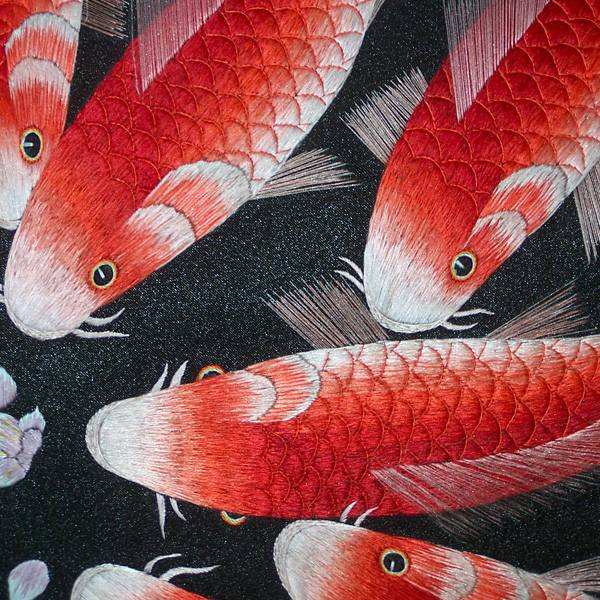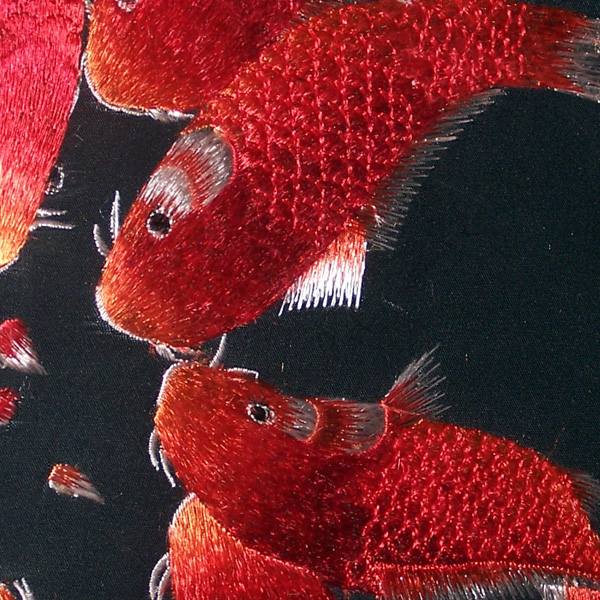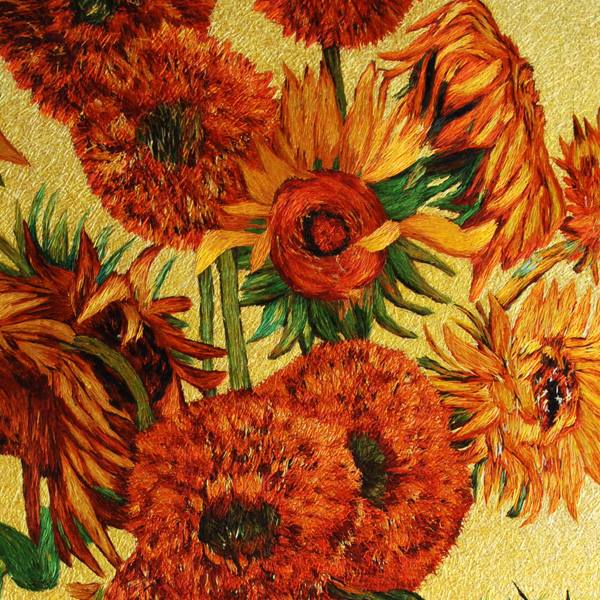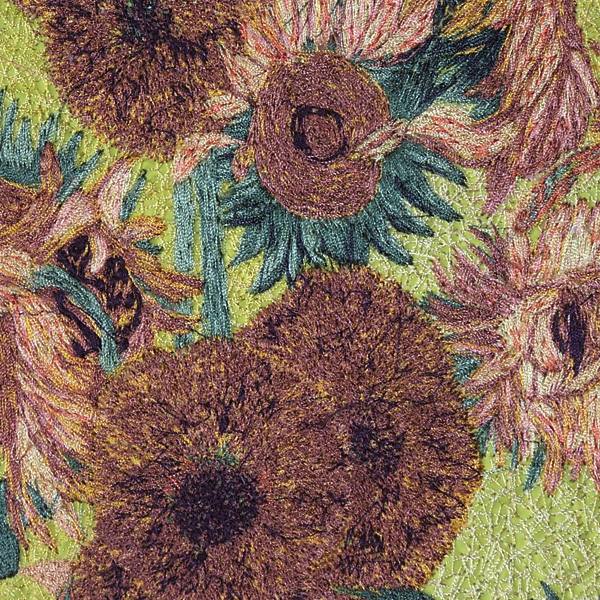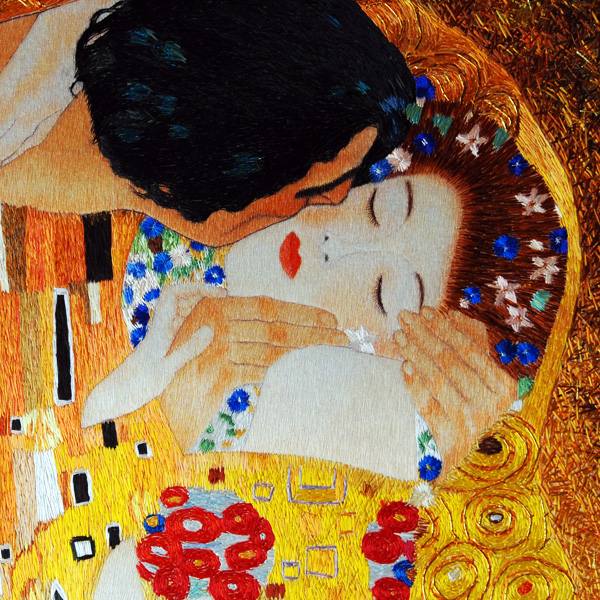How to Tell Chinese Silk Embroidery from Machine Embroidery
Content Preview - How to Tell Chinese Silk Embroidery from Machine Embroidery
Key Factors and Tips to Tell Chinese Silk Embroidery from Machine Embroidery

When people buy Chinese silk embroidery online, the last thing they want to encounter is that after a very long time even years, they find the embroidery they bought is machine made. However in an era when the computer technology is advancing so fast, telling hand embroidery from machine-made embroidery can be really challenging for many people. Machine-made embroidery has improved both in appearance and quality to the point where it can often be mistaken for hand-embroidered work. At Su Embroidery Studio, we list here several key factors and tips to for you to consider when you purchase silk embroidery online.
1. Material
Su embroidery, Chinese silk embroidery in Suzhou, is all hand embroidered with delicate natural mulberry silk threads on silk satin. The fragility of silk threads makes it challenging for machines to handle during the embroidery process. In contrast, machine embroidery typically uses artificial fibers or robust artificial silk threads which are much more durable than natural silk threads.
2. Size of Threads
Machine embroidery often uses uniform-sized threads throughout the entire piece, whereas high quality silk embroidery employ split silk threads. These split threads are derived from a single full silk strand and vary in size. Silk embroidery artists use different thread sizes to achieve different textures and details in their work. For instance, facial features in portrait embroidery require thinner silk threads for a smoother, more realistic appearance. In contrast, machine-made embroidery uses threads that are all of the same size and not split.
3. Stitches
Handmade silk embroidery exhibits natural variations in stitches due to their manual creation process. No two handmade silk embroidery pictures are exactly alike, even when they are created by the same embroidery artist. In contrast, machine-made embroidery has uniform and repetitive stitches which result in a regular pattern.
4. Colors and Texture
Hand embroidery often appears more brilliant and vibrant in color compared to the somewhat duller appearance of machine embroidery. When closely examining enlarged photos, hand embroidery appears neater, with a smoother texture, while machine embroidery can appear rougher.
To avoid purchasing machine embroidery online while seeking authentic Chinese silk embroidery, Su Embroidery Studio recommends you:
1. Request Close-Up Photos
Ask for high-resolution, close-up photos of the embroidery that clearly display the stitches and threads. Authentic Su embroidery, Chinese silk embroidery in Suzhou, uses pure silk threads, while machine embroidery uses artificial fibers. Examining the details will help you differentiate.
2. Customization Inquiry
Inquire whether the producer or seller can create custom hand embroidery based on your own designs or images. Machine embroidery producers are limited to producing designs for which they have pre-existing programs. They scan hand embroidery into a computer and use embroidery machines to replicate the design, resulting in almost identical stitches to the original hand embroidery.
3. Request Production Photos
Ask the producer or seller to provide photos of the hand embroidery in progress to confirm that it is indeed hand-embroidered. This visual documentation will serve as proof of authenticity.
4. Inspect the Backside
When possible, inspect the backside of the embroidery work. Chinese hand embroidery often has a slightly irregular or uneven back, reflecting the manual stitching process. Machine-made embroidery, on the other hand, typically have a neat and consistent backside with uniform stitches.
5. Check Thread Frays and Loose Ends
Examine the edges and corners of the embroidery for thread frays and loose ends. Hand-embroidered silk pieces may have some minor fraying and loose threads as silk threads are a delicate material. Machine-made embroideries are less likely to have such imperfections.
6. Seek Signatures or Hallmarks
Some hand embroidery artists may sign their work. Inquire with the seller if there are any signatures or hallmarks on the piece. This can serve as an additional indicator of authenticity.
7. Request Certificate of Authenticity
A certificate of authenticity serves as an official document that confirms the authenticity of the silk embroidery. The producer or seller is legally responsible for the statement in the certificate. From 2024, every silk embroidery from Su Embroidery Studio comes with a Certificate of Authenticity which has a unique Serial Number.
8. Assess Complexity and Detail
Analyze the complexity and level of detail in the embroidery design. Hand embroidery often showcases intricate details, nuanced shading, and fine textures that may be challenging for machines to replicate accurately.
9. Acquire Expert Appraisal
For valuable or antique silk embroideries, consider seeking an expert appraisal or authentication service. Experienced professionals can provide a comprehensive evaluation of the embroidery's craftsmanship and origin. At Su Embroidery Studio, we offer silk embroidery appraisal service to help you anytime.
10. Verify the Source:
Purchase Chinese silk embroidery from reputable sources and artists with a history of producing genuine hand-embroidered artworks.
By considering these factors and taking proactive steps, you can better distinguish genuine Chinese hand embroidered silk art from machine-made imitations, ensuring that you receive an authentic and exquisite piece of hand embroidery art.
Photos Help You to Tell Chinese Silk Embroidery from Machine Embroidery
When learning how to telling a silk hand embroidery from machine embroidery, explanation without photos can cause confusion. Sometimes one photo can be worth a thousand words. We believe after reading all the factors and tips above, and scrutinizing the photos below, your experience in judging embroidery work will be greatly enhanced.
As you can see from the close-up photos above, it is really a challenging task to differentiate the hand embroidery from the machine-made embroidery, especially the landscape and floral silk embroidery paintings which require relatively easy embroidery skills. So a very effective way to tell if the producer or seller specializes hand embroidery is to see if their collection has a large number of portrait embroidery paintings. The skin parts, face and hands for instance, in a portrait silk embroidery requires much finer silk threads to embroider than in the other parts so they can look smooth and natural. Embroidery machines at this stage are not able to handle the threads so fine. The final suggestion is that if you see the embroidery producer or seller can custom make portrait embroidery from personal photographs, you can be 100% confident that they do hand embroidery. Portrait embroidery from personal phototraphs is the hardest hand embroidery work. The hyper realism in the custom portrait embroidery requires the highest embroidery skills which many Chinese embroidery artists even with more than 30 years of embroidering experience are still not qualified to do.
Please note all of the above hand embroidered silk paintings we list above are of Fine Quality. As to Top Quality and Masterpiece embroidery work which apply much finer silk threads, their differences compared with machine embroidery are obvious to see. You can see photos of Top Quality and Masterpiece silk embroidery paintings in the media gallery at Quality Standards of Su Embroidery Studio.
Su Embroidery Studio only make and sell high quality silk embroideries that are 100% hand embroidered with natural silk threads. We have hundreds of silk embroidery paintings for sale in our online store.




